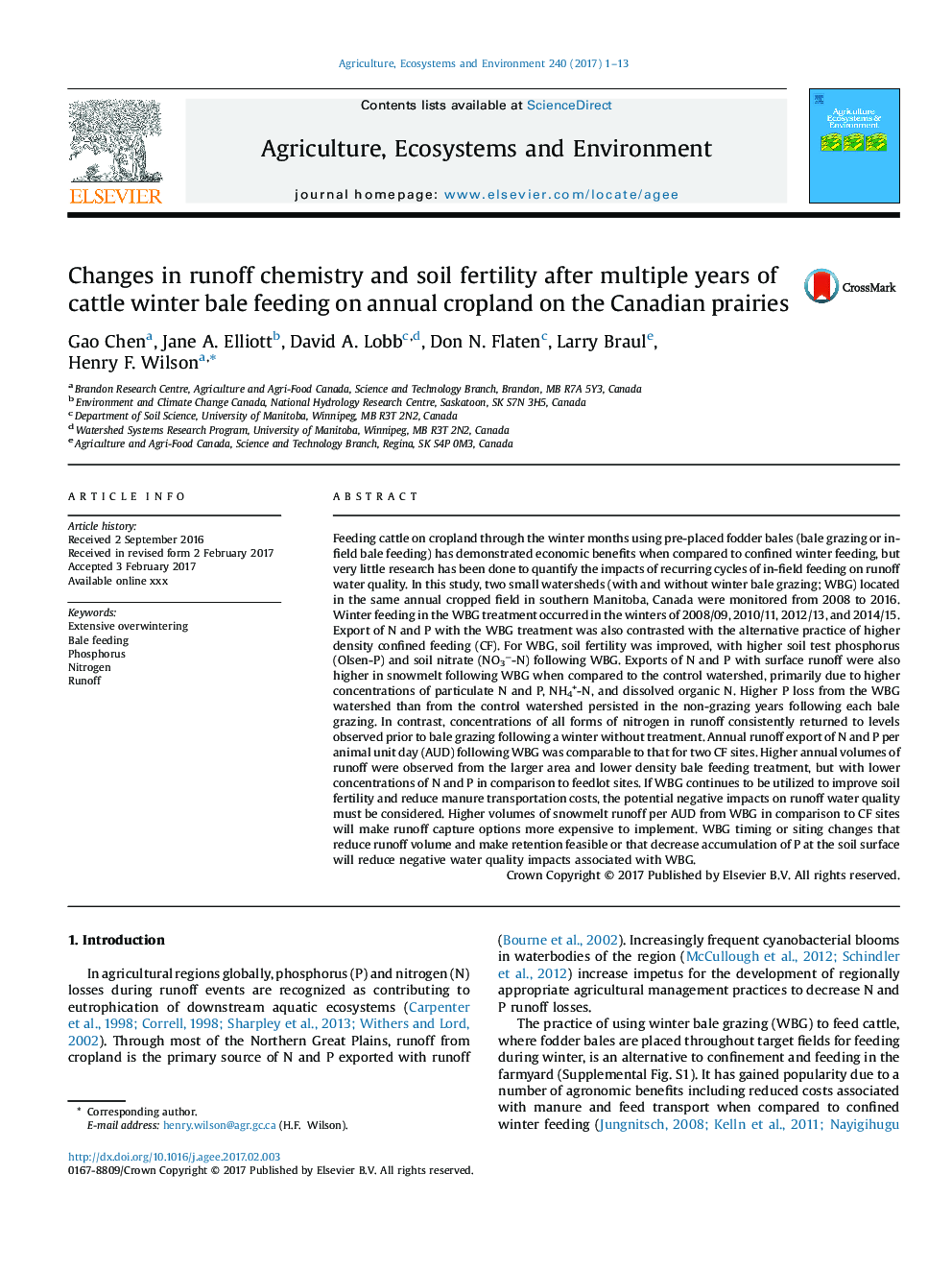| کد مقاله | کد نشریه | سال انتشار | مقاله انگلیسی | نسخه تمام متن |
|---|---|---|---|---|
| 5538149 | 1552012 | 2017 | 13 صفحه PDF | دانلود رایگان |
عنوان انگلیسی مقاله ISI
Changes in runoff chemistry and soil fertility after multiple years of cattle winter bale feeding on annual cropland on the Canadian prairies
ترجمه فارسی عنوان
تغییرات در رواناب شیمیایی و باروری خاک پس از چندین سال زراعی زمستانه گاو در سال زراعی سالیانه در مزرعه کانادایی
دانلود مقاله + سفارش ترجمه
دانلود مقاله ISI انگلیسی
رایگان برای ایرانیان
کلمات کلیدی
زمستان فراگیر تغذیه بیل، فسفر، نیتروژن، رواناب
موضوعات مرتبط
علوم زیستی و بیوفناوری
علوم کشاورزی و بیولوژیک
علوم زراعت و اصلاح نباتات
چکیده انگلیسی
Feeding cattle on cropland through the winter months using pre-placed fodder bales (bale grazing or in-field bale feeding) has demonstrated economic benefits when compared to confined winter feeding, but very little research has been done to quantify the impacts of recurring cycles of in-field feeding on runoff water quality. In this study, two small watersheds (with and without winter bale grazing; WBG) located in the same annual cropped field in southern Manitoba, Canada were monitored from 2008 to 2016. Winter feeding in the WBG treatment occurred in the winters of 2008/09, 2010/11, 2012/13, and 2014/15. Export of N and P with the WBG treatment was also contrasted with the alternative practice of higher density confined feeding (CF). For WBG, soil fertility was improved, with higher soil test phosphorus (Olsen-P) and soil nitrate (NO3â-N) following WBG. Exports of N and P with surface runoff were also higher in snowmelt following WBG when compared to the control watershed, primarily due to higher concentrations of particulate N and P, NH4+-N, and dissolved organic N. Higher P loss from the WBG watershed than from the control watershed persisted in the non-grazing years following each bale grazing. In contrast, concentrations of all forms of nitrogen in runoff consistently returned to levels observed prior to bale grazing following a winter without treatment. Annual runoff export of N and P per animal unit day (AUD) following WBG was comparable to that for two CF sites. Higher annual volumes of runoff were observed from the larger area and lower density bale feeding treatment, but with lower concentrations of N and P in comparison to feedlot sites. If WBG continues to be utilized to improve soil fertility and reduce manure transportation costs, the potential negative impacts on runoff water quality must be considered. Higher volumes of snowmelt runoff per AUD from WBG in comparison to CF sites will make runoff capture options more expensive to implement. WBG timing or siting changes that reduce runoff volume and make retention feasible or that decrease accumulation of P at the soil surface will reduce negative water quality impacts associated with WBG.
ناشر
Database: Elsevier - ScienceDirect (ساینس دایرکت)
Journal: Agriculture, Ecosystems & Environment - Volume 240, 1 March 2017, Pages 1-13
Journal: Agriculture, Ecosystems & Environment - Volume 240, 1 March 2017, Pages 1-13
نویسندگان
Gao Chen, Jane A. Elliott, David A. Lobb, Don N. Flaten, Larry Braul, Henry F. Wilson,
